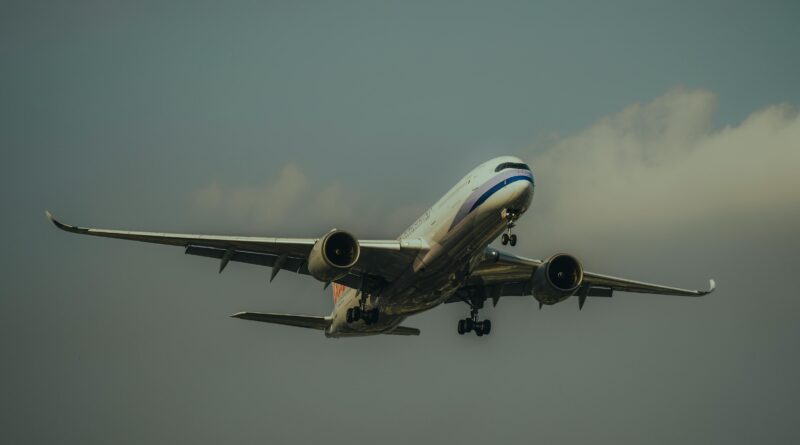Revolutionizing Aviation with Cutting-Edge Displays: Enhancing Pilot Experience and Safety
The aviation industry is undergoing a significant transformation, driven by advancements in technology and the increasing demands for safety and efficiency. Central to this evolution are „aviation displays,” which play a crucial role in both enhancing the pilot experience and ensuring flight safety. Today’s aircraft require sophisticated display systems that provide critical information seamlessly and intuitively, helping pilots make informed decisions quickly during flight.
The Role of Aviation Displays in Modern Cockpits
The advancement in display technologies, especially with the integration of OLED and touchscreen features, has not only enhanced the clarity and accessibility of information but has also ushered in a new era of interactive and intuitive cockpit interfaces. These modern displays allow pilots to interact more naturally with the system, using gestures and touches similar to those used on smart devices, which most are already familiar with. This familiarity helps reduce the learning curve and increases the efficiency with which pilots can monitor and control various aircraft systems. Furthermore, the use of OLED technology in aviation displays offers superior contrast and brightness, which are crucial for visibility under varied lighting conditions that pilots encounter. The ability to deliver deeper blacks and more vibrant colors improves the differentiation of important elements on the screen, which can be vital during critical phases of flight like takeoff, landing, or navigating through adverse weather conditions.
The integration of such technologies has also facilitated the consolidation of multiple instruments into single, streamlined displays, reducing cockpit clutter and simplifying the pilot’s dashboard. This consolidation not only makes it easier to process the wealth of data available but also significantly enhances the ergonomics of the cockpit environment, allowing pilots to concentrate more on flying the aircraft rather than managing the controls. Moreover, the evolution towards more adaptable and customizable display systems means that avionics can now be tailored to meet the specific needs of each flight operation or pilot preference. This level of customization can include adjustable interfaces, selectable data overlays, and even predictive flight data, which anticipates needs based on flight path and conditions. The continual improvement in aviation display technology not only signifies a leap towards more autonomous flight systems but also ensures that pilots remain essential decision-makers with the best tools at their disposal. As this technology evolves, it promises to keep pushing the boundaries of what is possible in aviation, combining enhanced safety with an unprecedented level of efficiency and control.
Enhancing Safety Through Superior Display Technology
Safety in aviation is paramount, and advanced display technologies significantly contribute to this aspect. By providing clear, concise, and instant access to flight-critical data, aviation displays minimize the risks associated with human error. Enhanced features like synthetic vision systems (SVS) and heads-up displays (HUDs) project essential information directly into the pilot’s line of sight, allowing for a 'eyes forward’ approach to flying. These innovations ensure that pilots have the most relevant and up-to-date information at their fingertips, crucial during low-visibility conditions or critical phases of flight. The advancement in display technologies, especially with the integration of OLED and touchscreen features, has not only enhanced the clarity and accessibility of information but has also ushered in a new era of interactive and intuitive cockpit interfaces. These modern displays allow pilots to interact more naturally with the system, using gestures and touches similar to those used on smart devices, which most are already familiar with. This familiarity helps reduce the learning curve and increases the efficiency with which pilots can monitor and control various aircraft systems. Furthermore, the use of OLED technology in aviation displays offers superior contrast and brightness, which are crucial for visibility under varied lighting conditions that pilots encounter. The ability to deliver deeper blacks and more vibrant colors improves the differentiation of important elements on the screen, which can be vital during critical phases of flight like takeoff, landing, or navigating through adverse weather conditions.
The integration of such technologies has also facilitated the consolidation of multiple instruments into single, streamlined displays, reducing cockpit clutter and simplifying the pilot’s dashboard. This consolidation not only makes it easier to process the wealth of data available but also significantly enhances the ergonomics of the cockpit environment, allowing pilots to concentrate more on flying the aircraft rather than managing the controls. Moreover, the evolution towards more adaptable and customizable display systems means that avionics can now be tailored to meet the specific needs of each flight operation or pilot preference. This level of customization can include adjustable interfaces, selectable data overlays, and even predictive flight data, which anticipates needs based on flight path and conditions. The continual improvement in aviation display technology not only signifies a leap towards more autonomous flight systems but also ensures that pilots remain essential decision-makers with the best tools at their disposal. As this technology evolves, it promises to keep pushing the boundaries of what is possible in aviation, combining enhanced safety with an unprecedented level of efficiency and control.
The Evolution and Future Trends in Aviation Display Technology
The potential incorporation of AI into aviation displays is especially promising. AI can analyze vast amounts of data from various flight sensors in real-time, offering pilots actionable insights and recommendations to optimize flight paths, reduce fuel consumption, and enhance safety. These smart systems can adapt to changing conditions, learning from each flight to improve future operations. For instance, AI could identify more efficient ascent and descent paths based on weather conditions, air traffic, and aircraft performance metrics, further streamlining operations and reducing unnecessary fuel burn. Augmented reality (AR) is another groundbreaking advancement that is transforming aviation displays. AR can overlay critical information directly onto the windshield or other transparent displays, allowing pilots to see navigation aids and obstacle warnings superimposed on the real-world view. This capability significantly enhances situational awareness, particularly in challenging conditions such as low visibility or congested airspace. By merging real-world visuals with digital data, AR provides a more intuitive and immersive way for pilots to interact with their environment, making it easier to comprehend complex information quickly and accurately.
The push for sustainability is also shaping the development of new aviation display technologies. Manufacturers are now using materials and technologies that require less power, last longer, and are recyclable, thereby reducing waste and energy consumption. LED and OLED technologies, for instance, are not only more energy-efficient but also offer better performance in terms of brightness and contrast compared to traditional displays. The move towards greener technologies aligns with the broader aviation industry’s goals to minimize its environmental impact, aiming for cleaner and more sustainable operations. Moreover, as these advanced displays become more integrated with other cockpit technologies, the possibility of a fully autonomous cockpit becomes more tangible. While pilots are essential for overseeing and managing flights, advanced displays equipped with AI and AR could handle more routine tasks, allowing pilots to focus on more critical decision-making and management duties. This shift could lead to enhancements in safety and efficiency, as the systems provide consistent, high-level performance, reducing the possibility of human error. The future of aviation displays is not just about technological innovation but also about how these technologies can create safer, more efficient, and environmentally friendly flying experiences. As AI, AR, and sustainability continue to drive advancements, the next generation of pilots will navigate with tools that are smarter, more integrated, and more responsive than ever before, marking a new era in aviation technology.
A New Era of Flight Enhanced by Advanced Displays
The development and integration of advanced aviation displays mark a new era in aviation, characterized by unprecedented levels of safety, efficiency, and pilot interaction. As technology continues to advance, the aviation industry must remain adaptive and proactive in incorporating these innovations. The ongoing improvements in display technologies will undoubtedly continue to shape the future of aviation, making it safer, more efficient, and more accessible to pilots and passengers alike. With „aviation displays” at the forefront, the sky is not the limit but just the beginning. This exciting trajectory of advancement in aviation displays is opening up possibilities that were once thought to be the domain of science fiction. The seamless integration of cutting-edge technologies is transforming the cockpit into a highly interactive, intuitive, and informative environment, providing pilots with unparalleled support and capabilities.
„With the rapid advancements in display technology, we are not just changing how pilots fly planes; we are redefining the very nature of aviation itself. Today’s innovations are tomorrow’s standards,”
As we continue to push the boundaries of what these technologies can achieve, the focus is also shifting towards how they can further enhance pilot training and performance. Simulators equipped with the latest display technologies can offer more realistic and complex training scenarios, better preparing pilots for the demanding nature of modern aviation. These training platforms are crucial for ensuring that pilots can fully leverage the capabilities of advanced cockpit systems from their first flight. Moreover, the integration of real-time data analytics into aviation displays is paving the way for more predictive maintenance and operational planning. By providing a constant stream of data about aircraft performance and environmental conditions, these systems allow airlines to optimize their operations, reduce downtime, and increase safety. Predictive analytics can foresee potential system failures before they occur, significantly decreasing the risk of in-flight issues and enhancing overall aircraft reliability. Furthermore, the enhancement of connectivity within the aviation ecosystem, facilitated by advanced displays, enables a more synchronized approach to flight management and air traffic control. This networked environment allows for smoother coordination between pilots, ground control, and other relevant parties, leading to improved route efficiency and reduced delays. The cumulative impact of these developments is profound, not only in enhancing the technical capabilities of aircraft but also in making flying a more enjoyable and safer experience for everyone involved. As aviation displays continue to evolve, they remain a critical component in the ongoing mission to foster a safer, more efficient, and sustainable aviation industry. The commitment to innovation and excellence in this area is clear, as it continues to propel the industry forward into an era of unprecedented possibilities.



